Have you ever found yourself lost in the endless scroll of social media, your thumb moving up and down mechanically as you consumed a never-ending feed of posts, photos or videos?
Or maybe you’ve spent an entire day binge-watching a series on Netflix, the hours slipping by with episode after episode of your new favourite show.
Perhaps you’ve even fallen down the rabbit hole of an immersive video game, losing all sense of time as you tried to level up and finish the next mission.
In all of those situations, what was motivating you to keep going was the effect of dopamine in your brain.
Dopamine is often called the molecule of want and desire. It’s a neurotransmitter in our brain that allows our neurons to communicate with each other. Most importantly, dopamine is part of the reward system in our brain—it is what motivates us to do stuff.
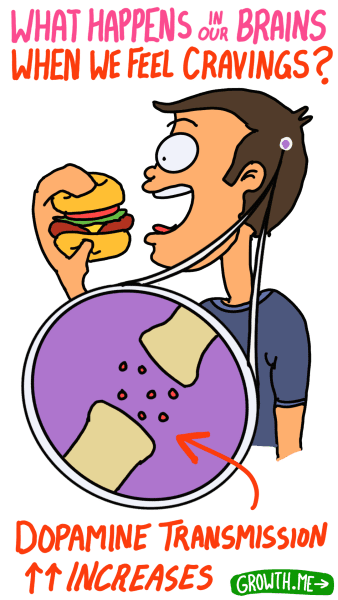
Here’s how dopamine works: Evolution designed our brains to reward us for anything that would increase our chances of survival and reproduction, like food and sex. That’s why eating a delicious steak feels so pleasurable.
Dopamine is necessary for us to feel a healthy drive and motivation in life—in one study mice were genetically engineered so their brains could not produce dopamine and they lost all motivation to do anything, they wouldn’t even try to find food to avoid starvation.
However, the problem is that in today’s digital society, we are constantly bombarded with high-dopamine stimulation, leading to compulsive overconsumption. Social media algorithms, cheap fast food, and free online adult videos are all designed to stimulate us endlessly and create a craving for more.
So what is all this doing to our drive and motivation? I’m sure we’ve all had the experience of wanting to get something important done, like a final exam or work project, but we kept getting pulled into procrastination, like checking social media for the 100th time. When it comes to compulsively consuming food, for the first time in human history, more people in the world are now obese than underweight (BBC.com). And later on we’ll talk more about the damaging effects of adult websites.
Dr. Anna Lembke wrote this book Dopamine Nation to help us understand dopamine so that we can take back control of our lives. I read the 300+ page book and wrote this summary to explore some of the most important lessons. By the end, you’ll understand how to change your brain to like doing hard things, by a process called dopamine fasting.
Sounds exciting? Then let’s go!
About the Author
Anna Lembke, MD (official site), is a professor of psychiatry at Stanford University School of Medicine. She has over 20 years of experience as a psychiatrist and is chief of the Stanford Addiction Medicine Dual Diagnosis Clinic. She has also published over 100 peer-reviewed scientific papers in prestigious journals.
⚖️ 1. The Pleasure-Pain Balance: Pursuing pleasure can, ironically, lead to decreased sensitivity to pleasure and more pain in our lives
Imagine you won a contest held by a fast food restaurant, so every day for the rest of your life you could eat FREE hamburgers, pizza, and ice cream… FOR LIFE! After a week of this new diet, you visit a friend for dinner, who has cooked a delicious meal of steamed brown rice, broccoli, and vegetables. Despite the food being nutritious and well-prepared, it now seems bland and tasteless to you.
But now imagine you went camping, got lost, and were starving in the wilderness for one week. Then you were rescued and given that same meal. This time, the broccoli tastes incredible and you savour every bite!
The bottom line? Pleasure is relative, it often depends on the contrast with what we are used to, what neuroscientists call our dopamine baseline.
Here are 5 concepts that are critical for understanding how to control our dopamine baseline:

- Homeostasis. Pleasure and pain work like a balance because they are located in overlapping areas of our brain. When we push down on the pleasure side of the balance in our brain (like by watching a funny cat video online), then afterwards our brain wants to correct the balance and for a short time our brain temporarily becomes tilted to the side of pain. In other words, pleasure has a short-term cost.
This is part of homeostasis, our body’s process of maintaining stability. For example, when you’re hot then your body sweats and when you’re cold then your body shivers, because it is trying to maintain the same internal temperature. The same thing happens when our dopamine levels peak due to being highly stimulated by food, sex, drugs, etc. - Tolerance. With repeated exposure to high-dopamine stimulation, our threshold for pleasure goes up. That means we need larger and larger doses to get the same satisfaction. Scientists call this process habituation. We’ve all seen the process of tolerance in real life: People who often drink alcohol need to consume a lot more of it to get drunk. The same thing happens with all things that stimulate high dopamine. The neuroscientist Nora Volkow actually found brains of drug addicts have decreased dopamine transmission compared to non-drug users.
One of my favourite science books ever is called Behave by Robert Sapolsky, it’s on how the human brain works and written by a biologist and professor. He wrote a section of the book on dopamine and habituation, saying “Our frequent human tragedy is that the more we consume, the hungrier we get. More and faster and stronger. What was an unexpected pleasure yesterday is what we feel entitled to today, and what won’t be enough tomorrow.” - Addiction. We often feel empty and restless after indulging in a craving because of that pain-pleasure balance. The good news is that if we simply wait, then our balance will return to normal. People who escape that pain with repeated and larger hits of dopamine can fall into addiction. This leads to a state of anhedonia (an inability to experience pleasure), where only something that is extremely highly stimulating can bring pleasure.
I’ve heard the popular online neuroscientist Andrew Huberman say “Addiction is a progressive narrowing of the things that give you pleasure.”
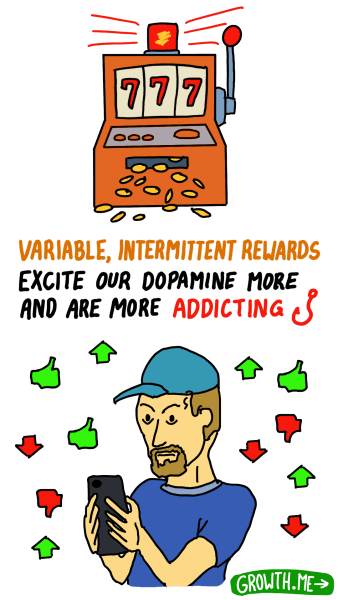
- Variable rewards. It turns out that actions leading to unpredictable rewards are more addicting than those providing stable rewards. The famous scientist Pavlov also found that mice worked more enthusiastically pushing a lever for food when the reward of food was made to be unpredictable, rather than when they received a stable reward.
That is why gambling can be so addicting, the variability of the reward provides us with a feeling of excitement and anticipation. I mean, how fun would a slot machine be if someone knew they would win every 10th time? This may also contribute to the addictiveness of social media—most of the time we don’t get a reward, but occasionally we are hit with a video that is very entertaining. The memory of those unpredictable rewards makes us keep scrolling for the next nugget of dopamine. - Novelty is a major driver of dopamine. That is why we tend to visit apps and sites that always have something new on the front page. It’s also a large reason why many people have a problem with compulsive watching of online adult videos, which offers endless novelty and variety. (Did you know 3 out of the top 20 websites in the world are related to adult content? Some are more popular than Amazon and Netflix!)
…More experts are beginning to discuss the negative impacts on real world relationships that can occur from overconsumption of adult content. Just like eating ice cream every day will make a healthy apple seem tasteless. The most popular book on the science of this topic is probably Your Brain on Porn by Gary Wilson, who wrote “The goal now is to seek your pleasure from interacting with real people without a screen between you, and awaken your appetite for life and love.”
In our brains, pleasure and pain work like a balance, through a process called homeostasis. When we tip the balance by indulging in something very pleasurable (like social media, junk food, adult video), then afterwards there is a type of pain—a feeling of emptiness, restlessness, and craving. Also, with repeated exposure to high-dopamine stimulation, our threshold for pleasure increases, which is called tolerance. Fewer things can give us pleasure.
🗓️ 2. 30-Day Dopamine Fast: Abstaining from a compulsive habit for one month is the first step to taking back control of our lives
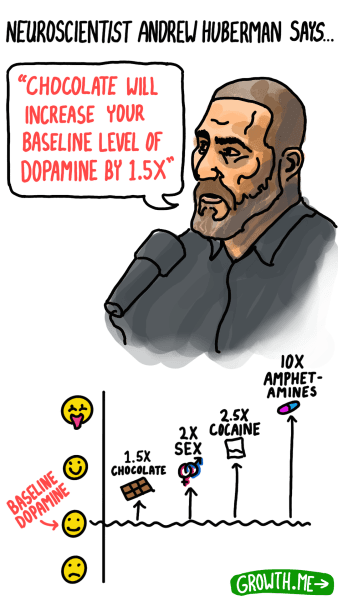
Sarah is a 20-year old college student, an aspiring lawyer with short brown hair that loves playing soccer. She began using cannabis casually on the weekends with friends, feeling it was no big deal.
But as the demands of Sarah’s life increased, she began using cannabis more often to manage her anxiety and unwind. Unfortunately, this habit began to impact her study habits, leading to a decline in grades and increase in stress.
Sarah knew that something had to change, so she went for help to a school counsellor. The counsellor advised her to quit cannabis for 30 days and see what happens. At first she resisted this suggestion, but when Sarah was reminded of her long-term ambitions, she realized that she did not want to be using cannabis daily in the future. So she decided to try quitting for a month.
One of the most useful clinical tools in breaking bad habits and addictions is a long-term perspective. That means asking: How do you want your life to look like in 3, 5 or 10 years?
Sarah is a fictional character, but she closely resembles some real-life stories from Dopamine Nation of young people seeking help in Dr. Lembke’s office. Her story is a classic situation when Dr. Anna Lembke would recommend a 30-day dopamine fast, which is also called a dopamine detox online.
Here’s how to do dopamine fasting, step-by-step:
- Abstain for 30 days. Whatever it is that you do compulsively—commit to a 30 day break. Imagine you’re doing a scientific experiment on yourself, with the goal of seeing what effects this will have. Dr. Lembke says the first 2 weeks of a dopamine fast usually makes people feel worse, like they are experiencing withdrawal. But after 4 weeks, you’ll usually feel much better, with new insights on how the high-dopamine activity affects you.
While this practice is based mainly on Dr. Lembke’s 20 years of clinical experience, there is some science to support this—for example, a study by Marc Schuckit of alcoholic men who were clinically depressed found that after 4 weeks of abstinence, 80% of the men no longer met the criteria for depression. That’s significantly better than most treatments for depression!
(A note of caution: For those who are severely addicted to substances like drugs or alcohol, there are risks of withdrawal as a biochemical reaction in the body. In these cases, quitting with the help of professional supervision is the way to go.) - Endure the boredom. It’s normal to feel a large amount of boredom and even some anxiety/stress when a major source of our dopamine is removed. We have a strong urge to divert our attention elsewhere, like to social media or a sugary snack. Throughout the book, the author discusses how her hobby of reading romance novels turned into a compulsion to read highly erotic stories that began interfering with her life. When she decided to quit this mild “addiction” for 30 days, she was surprised at her strong feelings of restlessness and frustration.
Rather than escaping those painful feelings with a different habit, she says we can find relief by escaping INTO the world. That means feeling what we feel inside, connecting with others around us, and finding what needs to be done in our environment.
…This reminds me of the advice that comes from a famous clinical psychologist and professor named Jordan Peterson, who wrote the bestselling book 12 Rules for Life. Dr. Peterson often advises young people to begin improving their lives by starting with a small achievable task, like cleaning their rooms. Because after our room is transformed from chaos to order, that brings a sense of confidence, which then allows us to face the larger problems in our lives. Then we can venture forth like a brave hero in a mythical story, and conquer those larger dragons too. - Return to balance. These 30 days should provide new clarity about how that compulsion was affecting your life. This will be the best time to decide what a healthy balance means to you. Most people want to return to the high-dopamine activity, but with less usage and more moderation. For example, playing video games but only as part of socializing, eating junk food only one day per week, and using cannabis no more than once per month. However, complete abstinence may work best for some types of people or addictions—abstinence is the approach that Alcoholics Anonymous recommends to all its members.
Cal Newport is a computer science professor and author of several popular books on effective studying and working. In his book Deep Work, Newport argues the most important skill for future success is the ability to concentrate deeply on one task for extended periods of time. The good news is, he believes this ability can be trained and improved through consistent practice, much like working out in a gym.
The most important thing to develop deep focus is avoiding distractions like social media, for longer and longer periods of time. Cal Newport wrote, “Efforts to deepen your focus will struggle if you don’t simultaneously wean your mind from a dependence on distraction.”
One practical way to do this is to schedule specific times during the day for browsing the internet or social media. By planning breaks in advance, we can resist the urge to mindlessly scroll and avoid losing hours of productivity..
To break compulsive habits for high-dopamine activities, such as cannabis, pornography, or video games, a 30-day dopamine fast can help. Abstaining from the habit for a month is challenging as the first two weeks bring boredom and frustration. However, after 30 days, you’ll feel better and have a clearer understanding of how the habit was impacting your life.
💪 3. Lean Into Pain: Restoring our dopamine balance involves embracing discomfort through cold water, exercise, fasting, etc
Imagine walking into your favourite café and smelling freshly baked chocolate brownies, warm chewy cookies, and large trays of soft glazed doughnuts. Your mouth waters as you order a large tray filled with sweet treats. You devour them one-by-one, not stopping until all that is left is an empty table covered with cookie crumbs.
But soon the sugar rush fades, replaced by a feeling of sickness and regret. You wish you could go back and eat less. As you leave the café, you promise to make healthier choices in the future, but you know the temptation will return.
We’ve all had that experience of over-indulging in pleasure, then feeling worse afterwards. As it turns out, the opposite is also true. If we experience something that is a little painful (like a cold shower), then afterwards life can feel more pleasurable. Dr. Anna Lembke calls this “the pain paradox.”
Here are some ways we can use pain to make our lives more joyful, healthy and balanced:
- Cold water immersion. Taking cold showers or even ice baths can have a positive impact on your body and mind. Studies have shown that it can help boost circulation, reduce inflammation, and even improve mood. Dopamine Nation highlights one study by Prague University that found 1 hour of cold water immersion led to a 250% increase in plasma dopamine levels. One of Dr. Lembke’s patients, a millionaire real estate pro recovering from an addiction to cocaine, found great benefits in taking daily freezing ice baths. A short period of discomfort can lead to feeling great all day long.
- Exercise. It can feel uncomfortable to begin a workout, but exercise provides a beneficial level of stress to our body. As a result, we grow healthier and stronger. Dr. Lembke goes as far as saying that for mood and energy, exercise is better than “any pill I can prescribe.” Some people get so much from exercise that it can become an addiction itself, like one of the author’s patients who kept running even after her leg bones fractured from so much exercise.)
- Fasting. A recent trend has been intermittent fasting, depriving your body of food for short periods of time. That could look like skipping breakfast, or not eating after 5PM, or perhaps fasting for 2 full days of the week. Dr. Lembke points out that not long ago this may be labeled an “eating disorder” but today science is increasingly recognizing great benefits in fasting, including for living longer.
- Exposure therapy. The gold standard treatment for reducing anxiety involves gradual exposure to the thing someone is afraid of or makes them uncomfortable. Through repeated, voluntary exposure to what we fear, there is less activation in the fear center of our brain called the amygdala. Another example of pain being the doorway to mental well-being.
If you want to live longer, one of the most important words you should know from science is “hormesis.” Hormesis is the name for a beneficial level of biological stress, not too much and not too little. For example, doing intermittent fasting or calorie restriction appears to provide health benefits. But if we stopped eating food completely for weeks, the stress of that extreme deprivation would cause our body to degrade. And if we eat too much, then our health also declines.
The book Lifespan was written by David Sinclair, a professor of genetics at Harvard Medical School and co-director of their Center for Aging Research. He wrote, “There are plenty of stressors that will activate longevity genes without damaging the cell, including certain types of exercise, intermittent fasting, low-protein diets, and exposure to hot and cold temperatures. That’s called hormesis.”
The “pain paradox” is that embracing pain and discomfort may be the key to restoring balance in our dopamine and pleasure. There are many physical and mental health benefits to hormesis, a beneficial level of biological stress, through practices like cold water immersion, strenuous exercise, and intermittent fasting.
🔒 4. Self-binding: Creating an environment and rules that help us stick to good habits, without willpower or discipline
Do you remember your New Year’s Resolutions from January 1st? As we begin each new year, many of us set lofty goals to improve ourselves, such as losing weight, reading more, or starting a new business.
But as time goes on, we struggle to stick to those new habits, especially during times of stress or difficulty. When faced with challenges at work or in relationships, or major life changes, our willpower often fails and we revert to the familiar comfort of bad habits. By February, we’re back to binging on chocolate ice cream and Netflix cartoons. At least, that’s what I would be doing!
If that has happened to you, then don’t worry: you’re not alone. But what if there was a more effective way to stick to good habits, a way that does NOT rely solely on self discipline or sheer willpower?
Enter self-binding, a powerful tool that helps us stick to good habits by shaping our environment and rules around our behavior. It’s based on recognizing and accepting our inherent human weaknesses.
Here are 3 self-binding methods we can use to avoid relapse to high-dopamine habit and addictions:
- Create physical barriers. This is about making it more difficult for us to access the high-dopamine behavior. For example, most “dopamine detox” videos on Youtube seem to recommend deleting apps that you don’t want to use. If Tiktok or Instagram is not on your phone and sending you notifications, then you’re far less likely to get sucked into it. Makes sense, right? In Dopamine Nation, Dr. Lembke shares the story of an alcoholic, that would keep wine locked up in a safe and only his wife had the key.
Perhaps the best-selling self-help book of the last few years is Atomic Habits by James Clear. He recommends making bad habits more difficult, but he also says we should make good habits easier. For example, if you want to start jogging in the mornings, then prepare your environment the night before. Get your running shoes and clothes ready beside your bed, so you don’t need to think about it the next morning, you just need to get up and go out the door.
And don’t feel too bad if you miss one day. Just get back to the good habit as soon as you can. As James Clear wrote, “Every action you take is a vote for the person you wish to become.”

- Set time limits. It is easier to moderate our consumption of a high-dopamine thing if we limit the time we’re allowed to consume it. In one experiment, rats that were given access to cocaine for just one hour a day were able to moderate their usage and consume steady amounts daily. On the other hand, rats given unlimited access to the cocaine kept consuming until death.
Here’s a practical real-life example. For many years, I’ve had a weekly cheat meal. This is a few hours of time per week when I can eat junk food like ice cream. By setting aside 5% of the week for indulgence, the other 95% of the time I can usually eat quite healthy like daily green smoothies. - Avoid subtle triggers. For many addictions, small temptations can lead to a surge in craving that leads to major relapse and binges. Therefore it can make a lot of sense for us to avoid even small things that may stimulate our cravings.
One of the most striking stories in Dopamine Nation is an engineer in his 60’s with a severe addiction to pornography, even building homemade machines to masturbate for several hours per day. After months in recovery, he relapsed after seeing a naked woman on a hotel television. From that failure, the man learned that he should avoid even small triggers related to his addiction, like seeing women’s volleyball on TV or even his own naked body in the mirror. To most of us, those rules may sound puritanical and extreme, but they gave the engineer freedom from his addiction and one year later he looked much healthier.
Many of us begin our goals with great enthusiasm, but eventually our willpower fails. Self-binding helps us to avoid bad habits, through the power of environment and behavioural rules. Create physical barriers between yourself and the high-dopamine habit, like deleting social media apps from your phone. Also, set specific time limits for usage and avoid small triggers that may lead to a relapse.
🗣️ 5. Shame and Honesty: Overcoming addictions with unexpected tools that foster social connection
Picture a 35-year old man named Joseph. He’s happily married, has two young children, and has always been hardworking and ambitious. However, he loves to party and dance to electronic music. “Work hard, play hard” is his mantra. One night, Joseph is offered some cocaine by a friend of a friend, and he decides to try it because… why not? He didn’t think he was the type of person who could get easily addicted.
But a few months later, Joseph was sneaking away to the washroom at work, so he could take quick hits of cocaine. He was spending more and more of his paycheck to buy the drug, and had secretly missed his last two car payments.
One day Joseph breaks down and tells his wife about his growing problem. She cannot believe it at first, but then gets very angry. She yells at Joseph, call him bad names, and tells him to get out of the house and stay away from her children. Joseph leaves feeling the worst he’s ever felt and for relief he reaches for the stash of cocaine under his car seat…
That story is a classic example of what Dr. Lembke calls the cycle of destructive shame. When we reach out for support to other people and they shame us with rejection, then our addictions can strengthen. However, there is a different type of “pro-social shame” based on radical honesty that can actually help us to get better and stay better.
Here are 4 ways radical honesty and pro-social shame can help us:
- Overcoming denial. Many of us are not really aware of our problem, when we are caught in the grip of an addiction or compulsive bad habit. By speaking to another person with radical honesty, it provides a mirror by which we see ourselves clearly for the first time. For example, Dr. Lembke first became aware of her erotic novel addiction while demonstrating a therapy exercise in class with a student. A major reason why therapy is useful to many people is simply having another person listen to us without judgment, so we can learn how we really feel about things.
There is some science to support the idea that being honest can also boost activity in the part of our brain called the prefrontal cortex, which helps us to plan long-term and resist impulses. Maybe that is a hidden reason why most religions in the world have put so much emphasis on telling the truth! - Creating connection. Usually we assume that other people will reject us if we admit flaws about ourselves. But usually the opposite happens. Admitting our human weaknesses makes others feel closer to us. It creates those real, intimate connections that we crave. And building a strong network of social support is very important for getting out of addictions.
One of the best books on trauma is The Body Keeps the Score by Dr. Bessel van der Kolk, a renowned professor who has published over 150 papers in science journals. He explains that most of the tools used to help people overcome trauma center on helping them feel safe and relaxed in relationships.
Specifically he wrote, “Being able to feel safe with other people is probably the single most important aspect of mental health; safe connections are fundamental to meaningful and satisfying lives.” To achieve that, professional therapists may use a wide variety of approaches including group therapy, mindfulness tools, yoga practices, neurofeedback machines, eye movement therapy, and more.
- Taking responsibility. For healing and recovery to occur, Dr. Lembke says her patients must take on responsibility and accountability for their situation. Even if their situation was not their fault, they must see they have the power to choose their response today. Unfortunately, many professionals cause their patients to become disempowered and trapped in a victim story, as a misguided attempt to be empathetic.
- Making amends. The way Alcoholics Anonymous works is that when members relapse in their addiction, they must admit their mistake to the group. Then instead of being shamed and rejected, they are given acceptance and belonging. They are also given specific steps to correct their behaviour in the future and make amends for any wrongs they have done. This is what makes 12 step programs for addictions like Alcoholics Anonymous so effective—they harness shame in a positive way. The members feel a strong motivation not to relapse because they don’t want to disappoint the other group members.
Pro-social shame is a type of shame that can help people overcome addictions. It involves telling the truth, being accepted by others, and then taking steps to make amends for past transgressions. Radical honesty with others about our weaknesses allows us to overcome denial, build real connections, and take responsibility for making better decisions going forward.
- Stop using a source of high-dopamine for 30 days. This is by far the biggest actionable tool in this book. By taking a break for one month from your source of dopamine, you’ll gain clarity about how it was affecting too and probably reset your dopamine transmission baseline.
- Add cold water to the end of your shower. The easiest way to begin cold water immersion is by ending a warm shower with 1-2 minutes of cold water, by lowering the temperature gradually. Remember the aim is to push down on the pain side of your inner dopamine balance, so you can increase your sensitivity to pleasure.
- Set a daily time limit for your biggest distractions. The big problem with digital distractions like social media is that often a “5 minute break” easily slides into a 2-hour long scrolling session, because of how addicting the algorithms are designed to be. Here’s how to set hard limits on our devices step-by-step:
- a) Make a list of your 3 biggest digital distractions, including apps or websites.
- b) Choose a daily time limit that you will try for each one, for the next 30 days.
- c) Then set your devices to limit the usage. There are built in features on iPhones and Macs to do this called Screen Time, on Android it is called Digital Wellbeing, and on Windows there is the Family Safety app.

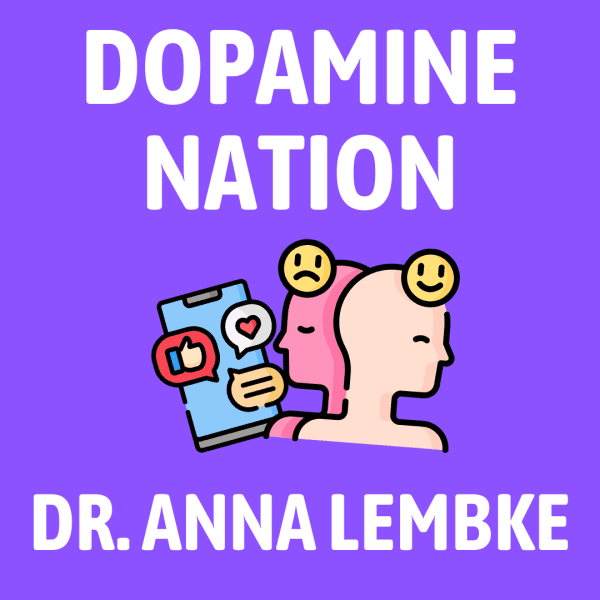
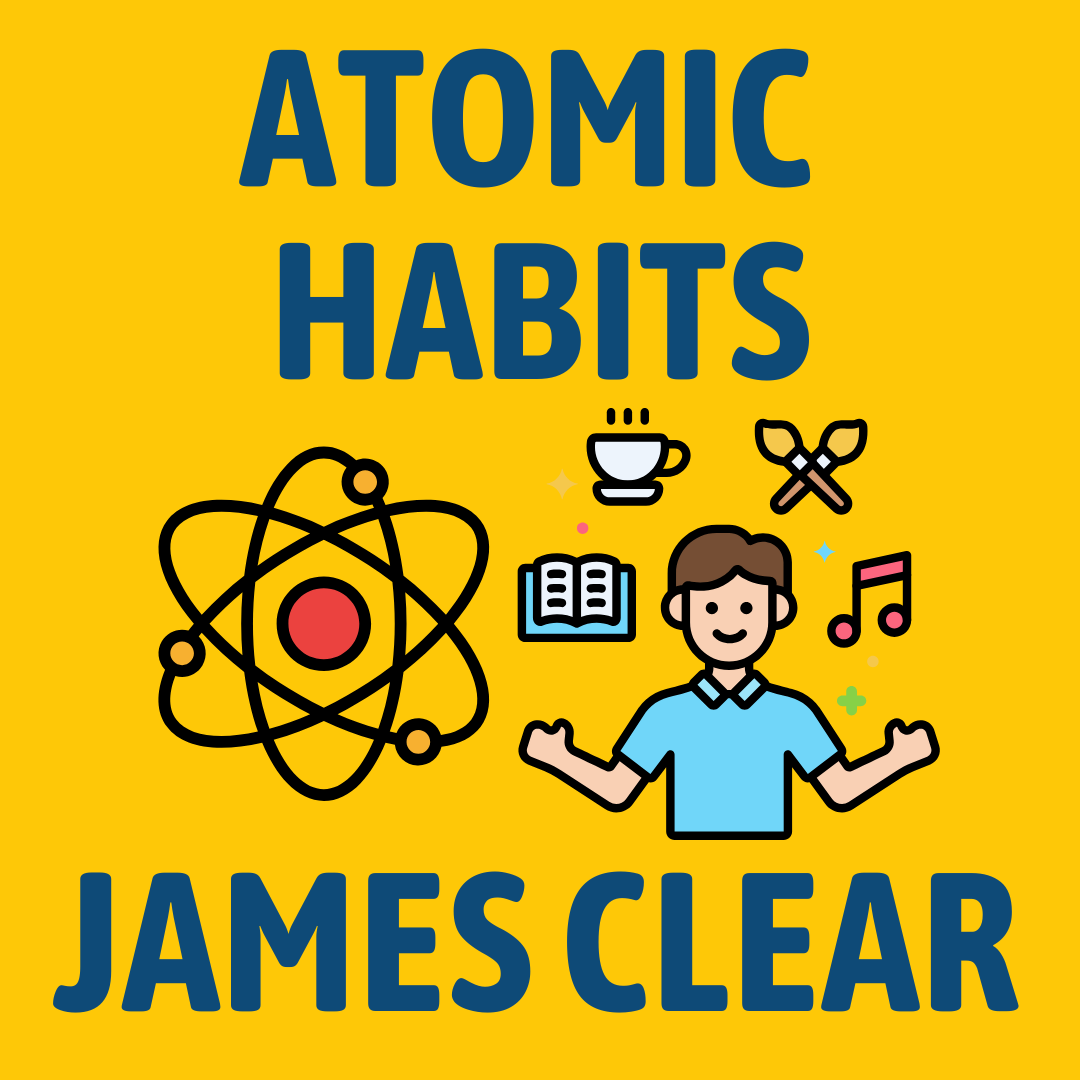
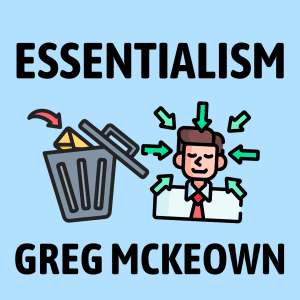
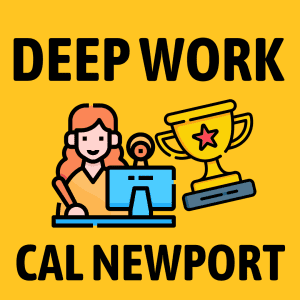



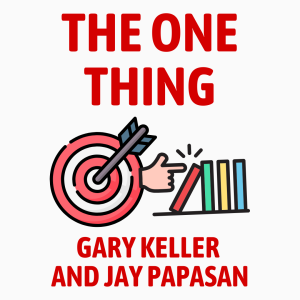

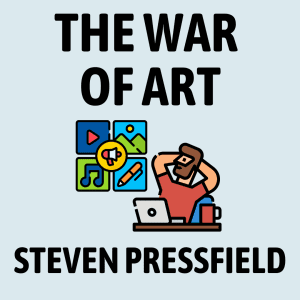
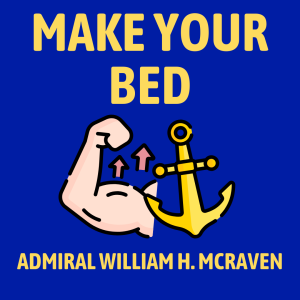

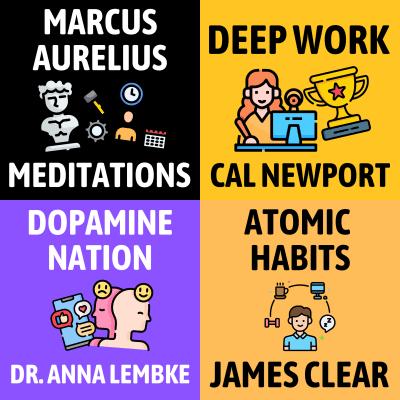

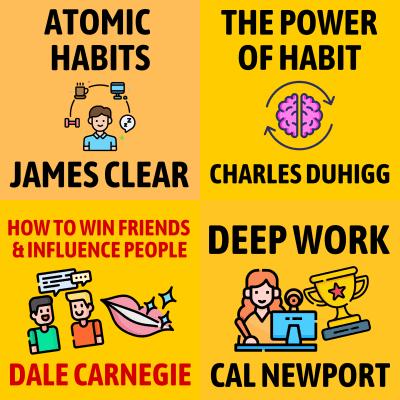
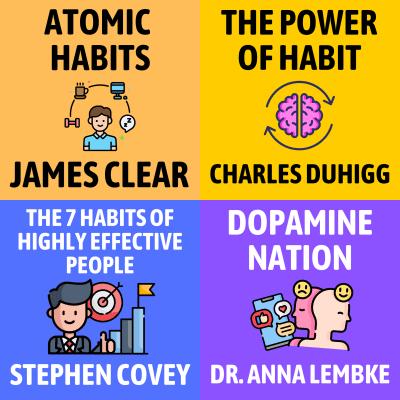
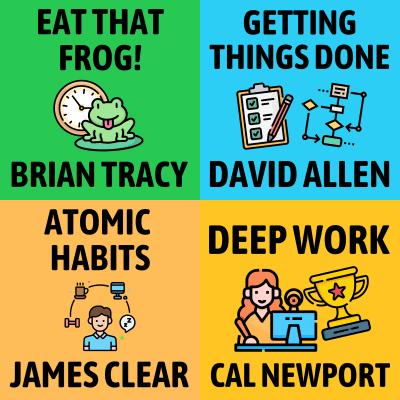












Community Notes